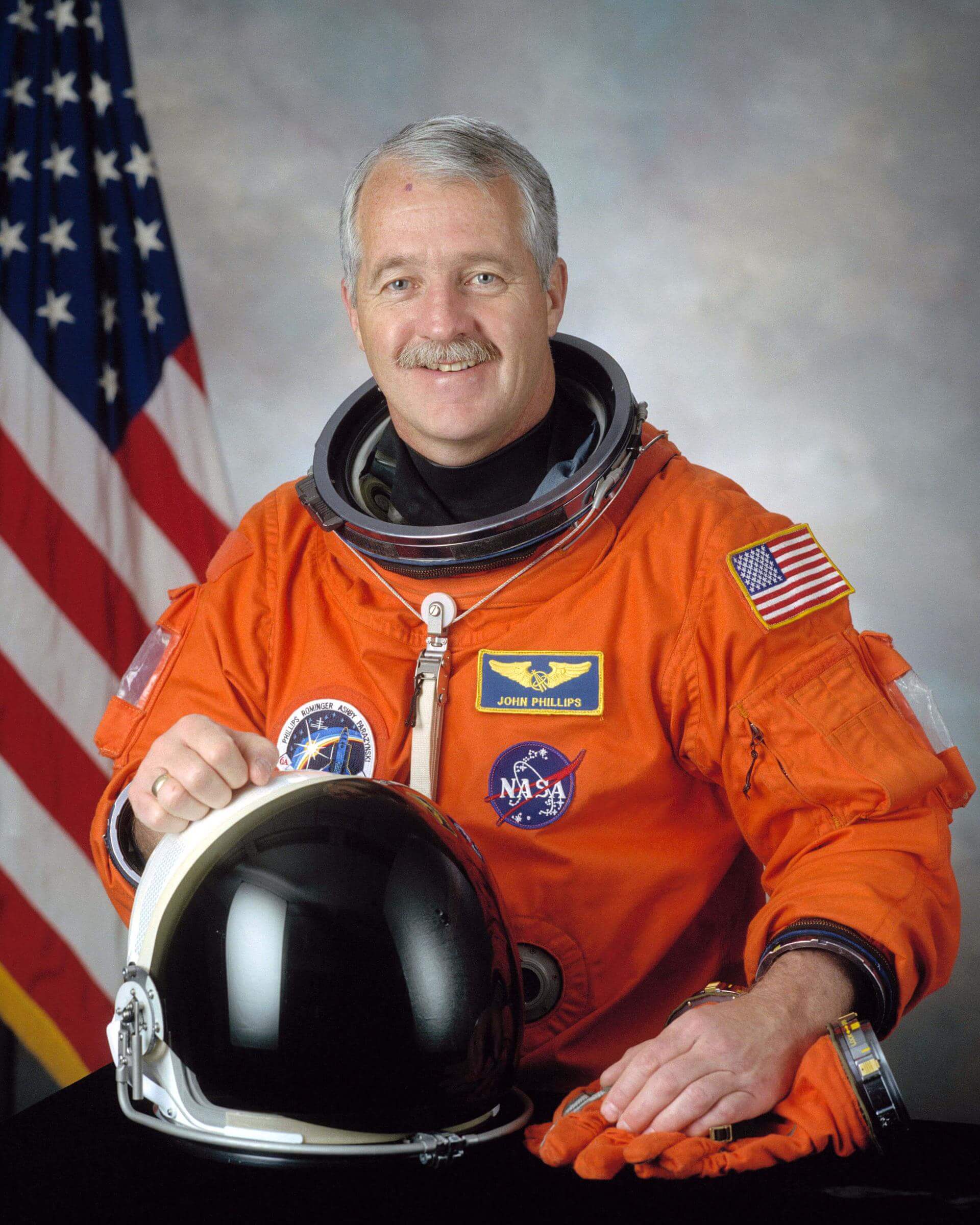John L. Phillips
American - (NASA)
Retired
Date of Birth: April 15, 1951
Age: 74
John Lynch Phillips is a NASA astronaut. Phillips is also a Naval Aviator and retired captain, United States Navy Reserve. Phillips has received numerous awards and special honors. He is a National Merit Scholar, graduated 2nd in his class of 906 people at the U.S. Naval Academy in 1972. Phillips has also been awarded the NASA Space Flight Medal, NASA Distinguished Service Medal, the Gagarin Medal and several others. Phillips has logged over 4,400 flight hours and 250 aircraft carrier landings, flying the A-7 Corsair II carrier-based light attack aircraft while on active duty in the Regular Navy and subsequently during his time as a Navy Reservist from 1982 to 2002. At the time of his retirement, Phillips had retained the rank of captain.
Space Shuttle Endeavour / OV-105 | STS-100
National Aeronautics and Space Administration | United States of AmericaKennedy Space Center, FL, USA
April 19, 2001, 6:40 p.m.
Soyuz-FG | Soyuz TMA-6
Progress Rocket Space Center | RussiaBaikonur Cosmodrome, Republic of Kazakhstan
April 15, 2005, 12:46 a.m.
Status: Success
Mission:
Soyuz TMA-6 begins Expedition 11 by carrying 3 astronauts and cosmonauts to the International Space Station. Russian Commander, cosmonaut Sergei Krikalev alongside Flight Engineers, John Phillips (NASA) & Roberto Vittori (ESA) will launch aboard the Soyuz spacecraft from the Baikonur Cosmodrome in Kazakhstan and then rendezvous with the station. It landed on October 11, 2005, 01:09:00 UTC
Low Earth OrbitSpace Shuttle Discovery / OV-103 | STS-119
National Aeronautics and Space Administration | United States of AmericaKennedy Space Center, FL, USA
March 15, 2009, 11:43 p.m.
Status: Success
Mission:
STS-119 (ISS assembly flight 15A) was a space shuttle mission to the International Space Station (ISS) which was flown by Space Shuttle Discovery during March 2009. It delivered and assembled the fourth starboard Integrated Truss Segment (S6), and the fourth set of solar arrays and batteries to the station.
Low Earth OrbitThe National Aeronautics and Space Administration is an independent agency of the executive branch of the United States federal government responsible for the civilian space program, as well as aeronautics and aerospace research. NASA have many launch facilities but most are inactive. The most commonly used pad will be LC-39B at Kennedy Space Center in Florida.
Falcon 9
CSG-3
Space Launch Complex 4E - Vandenberg SFB, CA, USACSG-3 is an Earth observation satellite for the Italian Space Agency, part of a reconnaissance constellation using synthetic aperture radars operatin…
Long March 7A
Shijian 29 A-B
201 - Wenchang Space Launch Site, People's Republic of China2 satellites officially described as for "demonstration of new technologies for spatial targets detection" purposes.
Long March 4B
Tianhui 7
Launch Area 94 (SLS-2 / 603) - Jiuquan Satellite Launch Center, People's Republic of ChinaA satellite officially described as for cartography purposes, details TBD.
Soyuz 2.1b/Fregat-M
AIST-2T 01 & 02
Cosmodrome Site 1S - Vostochny Cosmodrome, Siberia, Russian FederationA pair of Russian optical Earth observation satellites built by the Progress Rocket Space Centre for obtaining stereo images of the Earth's surface, …
Long March 3B/E
Fengyun-4C
Launch Complex 2 (LC-2) - Xichang Satellite Launch Center, People's Republic of ChinaChina's geostationary meteorological satellite program FY-4 (Feng Yun 4) is the second generation of chinese geostationary meteorological satellites.




